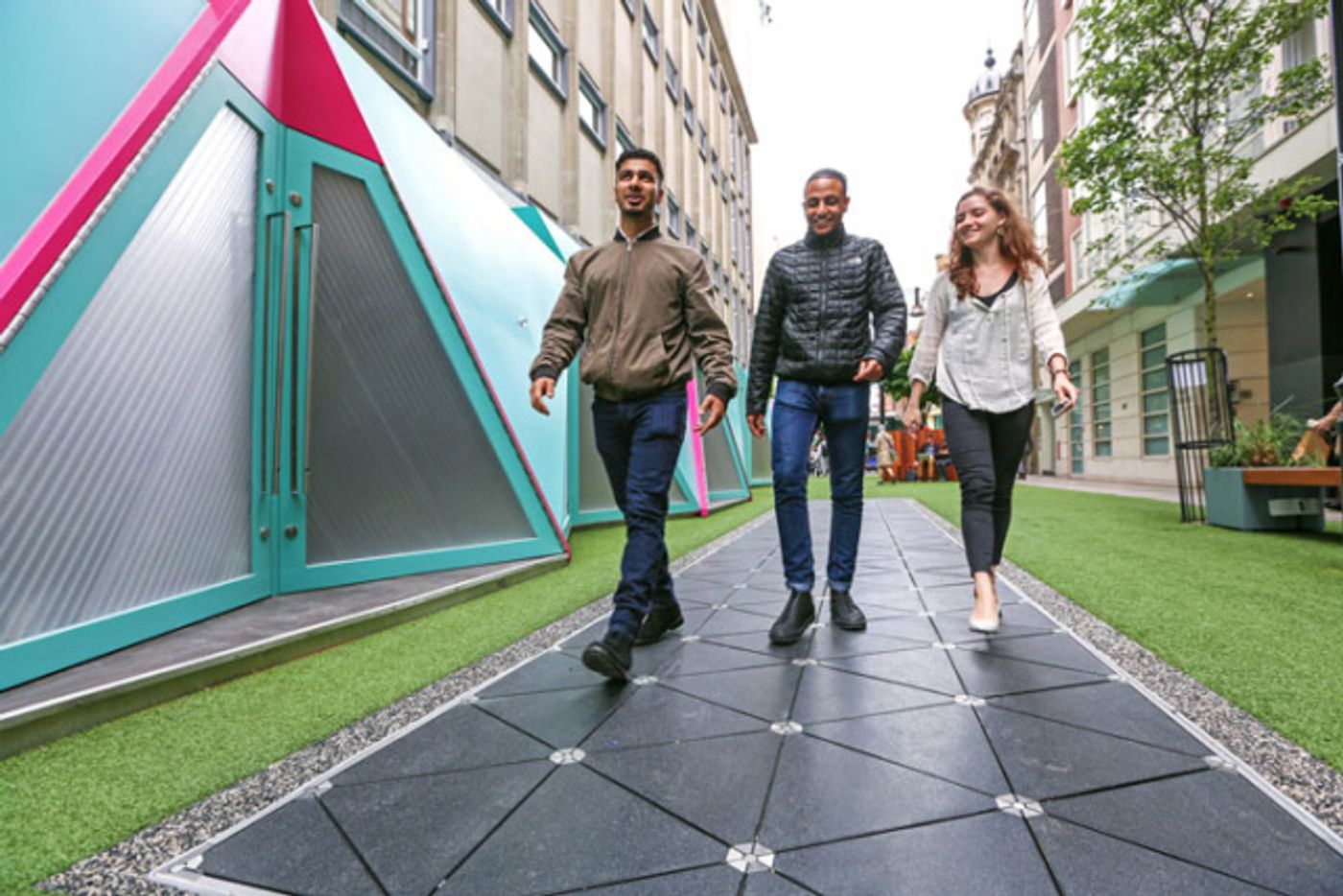Powering Cities by Walking
Whenever you move, your body requires and expends energy. What if some of that energy could be gathered up and applied in useful ways within a city? That’s the theory behind Pavegen, a business that uses kinetic technology and specialized tiles to harness the power of footsteps, with a focus on urban settings.
As global warming and climate change observably and directly impact a growing number of ecosystems and lives around the world, the hunt for renewable, sustainable and “green” energy sources is in full force. Collecting the energy generated by an activity that is nearly continuous in cities – walking – is a great idea and a challenging one, as well. Pavegen Founder and CEO Laurence Kemball-Cook and his team had to grapple with the diverse and inconstant physical conditions of a city street in order to create a working model. Changes in the weather and the many types of impacts one stretch of sidewalk experiences are among the dynamic factors they encountered.
“Engineering this versatility into our system has been a big challenge, and it has been a highly iterative process to get to where our design is today,” Kemball-Cook said.
The 2018 iteration of Pavegen consists of triangular tiles that have generators under each of their points. As people walk over them, the surface moves several millimeters and the weight of the footfall pushes down on electromagnetic generators. As the generators compress, a rotary motion is produced, which creates approximately five watts of power per step. This energy can be stored up or used in the local environment to run lighting, sensors or other tech. Because the Pavegen team has now carefully studied human steps, the current version of the tiles can convert 200 times more energy per square foot than older models. Pavegen also has an app that allows interested walkers to see how much energy they are creating and even earn rewards.
“Pavegen’s combination of physical interactivity and rich data is helping to bring smart cities to life. Forget the Internet of Things, we’re building the Internet of Beings,” Kemball-Cook said.
For example, in Washington D.C., a Pavegen system was introduced to a standard concrete street-crossing. The energy generated by foot traffic now runs lighting and the installed “park” collects power from thousands of walkers daily. Pavegen has created more than 150 projects all over the globe so far, in locations such as airports, train stations, public spaces and shopping areas.
Pavegen can also be rented through a branch of the company called Pavegen LIVE, which focuses on events and “activation;” using this unique tech “to power experiences across the globe.”
Source:









